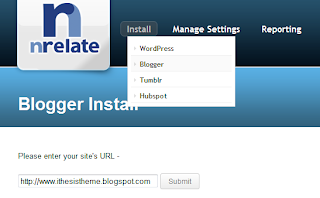During the last few weeks there have seen a lot of discussion about Google's New Notification for Inbound Links being sending new messages by Google to the webmasters in case of unnatural links detection pointed to there sites for a long period.
Type of Messages. There are two types of warned link messages.
1.Original link messages (reducing trust in the entire site)
2.New link messages
Original Link Messages (Trust reduction in the entire site)
Google sends new notification if, "In case of crawling the back links that points to a site, if the site is caught by having an unnatural links pattern(Link Spamming) for it page rank improvement and it consist of a long period" then Google respond in case of reducing its trust in the entire site.There for if your site is notified for unnatural links then Google strongly recommends you to clean up as many as possibly unnatural or low quality links from the list of your back links and sends a reconsideration report for your site.
New Link Messages (Special case).
In past if you are adopting some link building strategies being a part of some link schemes that causes the web violation and goes against webmaster guidelines then Google only targets some spammy or artificial links pointed to your site and will discredited only them not your entire site and you will receive new link message in your inbox with a yellow exclamation mark like other messages have which tries to convey you addressing a situation that is not as severe as the previous "Google is losing the trust in your entire site.
Google recommends you to pay some attention to these new link messages.New messages sending from Google to webmasters are direct communication about losing its trust on your site due to some unnatural links pointed to your site.Actually Google wants to warn you about your sites down ranking in search results pointing out the presence of artificial links to site from the resources like excessive link exchange, artificial directory submission by using some automated submission system, guestbook spam, blog spamming, widgetbait, low quality paid links, and some other type of linkspam etc.
Action required to take after getting a new message.Over about 20,000 domains have been yet received new link messages.In case resolving this fully headache instantly created issue, Google asks you to use its recently launched ability to Download backlinks to your site sorted by date to spot anything unusually going on by checking your most recently index links in Google webmaster tool that will help you to finding the unnatural links due them you received the new link messages.Its worth cleaning that up and submitting reconsideration report for your site
Type of Messages. There are two types of warned link messages.
1.Original link messages (reducing trust in the entire site)
2.New link messages
Original Link Messages (Trust reduction in the entire site)
Google sends new notification if, "In case of crawling the back links that points to a site, if the site is caught by having an unnatural links pattern(Link Spamming) for it page rank improvement and it consist of a long period" then Google respond in case of reducing its trust in the entire site.There for if your site is notified for unnatural links then Google strongly recommends you to clean up as many as possibly unnatural or low quality links from the list of your back links and sends a reconsideration report for your site.
New Link Messages (Special case).
In past if you are adopting some link building strategies being a part of some link schemes that causes the web violation and goes against webmaster guidelines then Google only targets some spammy or artificial links pointed to your site and will discredited only them not your entire site and you will receive new link message in your inbox with a yellow exclamation mark like other messages have which tries to convey you addressing a situation that is not as severe as the previous "Google is losing the trust in your entire site.
Google recommends you to pay some attention to these new link messages.New messages sending from Google to webmasters are direct communication about losing its trust on your site due to some unnatural links pointed to your site.Actually Google wants to warn you about your sites down ranking in search results pointing out the presence of artificial links to site from the resources like excessive link exchange, artificial directory submission by using some automated submission system, guestbook spam, blog spamming, widgetbait, low quality paid links, and some other type of linkspam etc.
Action required to take after getting a new message.Over about 20,000 domains have been yet received new link messages.In case resolving this fully headache instantly created issue, Google asks you to use its recently launched ability to Download backlinks to your site sorted by date to spot anything unusually going on by checking your most recently index links in Google webmaster tool that will help you to finding the unnatural links due them you received the new link messages.Its worth cleaning that up and submitting reconsideration report for your site

















